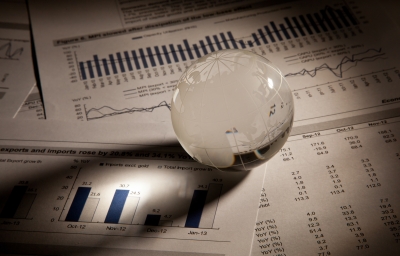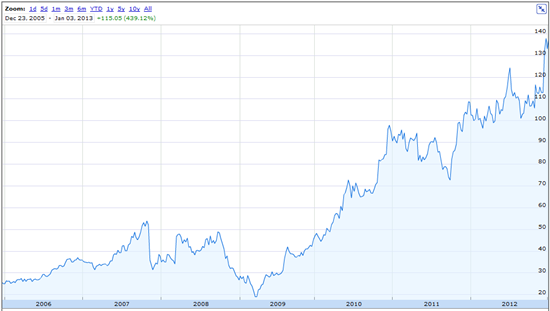15 recommended stocks for the first half of 2014
 The beginning of the year is when it seems like every financial website puts out its top or worst stocks. In that vein, I offer my 15 recommended stocks for 2014 – or at least the first half of the year. I cannot list the worst stocks, as there are too many of those to list. I can at least list the 15 recommended stocks that will give you a good basis for the first half of 2014.
The beginning of the year is when it seems like every financial website puts out its top or worst stocks. In that vein, I offer my 15 recommended stocks for 2014 – or at least the first half of the year. I cannot list the worst stocks, as there are too many of those to list. I can at least list the 15 recommended stocks that will give you a good basis for the first half of 2014.
Many sites do all year lists, but I am only committing to this list for the first 6 months. There is a great reason for this. It is almost impossible to predict the market farther out than 6 month. In fact, it is quite possible for the market to do a massive correction and even this list would be a fallacy. There is always some risk with any investment and you are encouraged to read this site’s disclaimer before acting on this list.
I would expect all of these companies to maintain their status as Good Companies on my Watch List. I would not expect all of them to make a top 15 recommended stocks list at the end of June. Some of them will grow a bit slower than I expect, and a couple of the 15 recommended stocks are probably going to lose money. As Peter Lynch famously said:
“In this business if you’re good, you’re right six times out of ten. You’re never going to be right nine times out of ten.”
By Peter’s standards, I hope to right on this list with 9 of these picks. I don’t expect all 15 recommended stocks to be massive growth stocks in the year. I also think the list is successful if the list of 15 beats the S&P 500 and the Dow30. In July, perhaps I will publish a list for the second half of the year.
If we would go back in time (starting from December 1) and buy the 15 recommended stocks 3 years ago our portfolio would have grown very nicely. These stocks would have appreciated by 73.35% year over year. They would have grown 184.79% over the last three years. These stocks would have beaten the market (as measured by the Dow Jones Industrial Average) for the last three years by 330.57%. In the past year, these stocks would have beaten the market by 212.17%. With that track record, we should expect good results in the next 6 months.
All of the stocks on this list are rated as Good Companies using the method that I describe in my book The Confident Investor. You can purchase my book wherever books are sold such as Amazon, Barnes and Noble, and Books A Million. It is available in e-book formats for Nook, Kindle, and iPad.
The 15 recommended stocks were chosen from Good Companies on my Watch List. This means we already know they are fairly well managed and have a history of solid growth. While all of the stocks on the Watch List are Good Companies, these 15 recommended stocks seem to be the most well setup for aggressive growth in the first half of 2014.
The 15 recommended stocks for the first half of 2014 also performed very well over the past year and the past 3 years. As I have written before, the past is not a perfect indicator of the future, but it is probably the best indicator that we have to use.
I didn’t try overly hard to make this list of 15 recommended stocks to be a balanced portfolio covering multiple industries. I am happy to report that it isn’t a terrible unbalance. The most glaring omission is that it is very light in banking and in consumer technology. I simply could not find a banking stock that was worth the risk compared to other industries. Also, the consumer technology vertical is simply not performing that well right now. I anticipate that trend to continue for the next few months at least.
It might be possible to criticize this list by its heavy reliance on healthcare and retail. That would be fair but, once again, I wasn’t trying to get a perfectly balanced portfolio.
If you want a more balanced portfolio, you may want to consider some of the Honorable Mention stocks at the end of the list. Also, I always maintain that you should have approximately 30% of your portfolio invested in index funds. These funds should be divided by large and small cap funds, an index bond fund, and an index international fund. This would help to balance your portfolio.
You could also look at the Watch List of stocks. These stocks have shown that they are well-run companies. If you are concerned about a balanced portfolio, I suggest that you compliment the 15 recommended stocks with a couple stocks from the Watch List.
The list of 15 recommended stocks for the first half of 2014
- ABMD
- ALXN
- BCPC
- BLK
- BWLD
- CBI
- CERN
- GPOR
- PCLN
- QCOR
- SAM
- TMO
- TSCO
- UA
- ULTA


